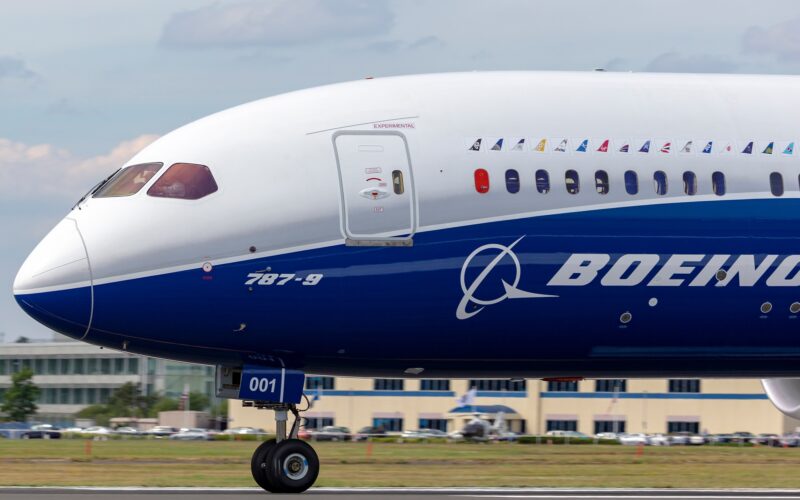Boeing has revealed more information about the 787 Increased Gross Weight (IGW) aircraft, an improvement that will increase payload and range on the 787-9 and 787-10.
As reported by The Air Current, the manufacturer first touted the idea of a 787 IGW to Qantas and Air New Zealand in 2019. According to Darren Hulst, the vice president of Commercial Marketing at Boeing, the planemaker plans to add 4.6 metric tons of capacity on the 787-9 and 6.4 metric tons on the 787-10, increasing the total Maximum Takeoff Weight (MTOW) of the largest 787 by 12,000 lbs (5443 kg).
Uncertainty remains about when the newly improved 787s will arrive, the report added.
Boeing announced that the production of the 787 would grow to four per month and will likely increase to five per month by the end of 2023.
Over the past few years, the manufacturer has been forced to suspend deliveries of the aircraft type after being plagued by a number of issues. The most recent issue occurred in February 2023 when a supplier-side analysis error related to the forward pressure bulkhead on the 787 forced the company to suspend deliveries for several weeks.
The United States (US) Federal Aviation Administration (FAA) gave the go-ahead for the planemaker to resume deliveries of the 787 to customers in March 2023.
Boeing’s main rival, Airbus, also introduced structural improvements to the A350, which directly competes with the 787, in October 2022. The European manufacturer reduced the structural weight of the A350-900 and A350-1000 by 1.2 metric tons and improved operations at ‘challenging airports’ located at high altitudes, have short runways, or have hot weather conditions.
These changes, on average, improved the A350-900’s MTOW by 3.5 tons, while the A350-1000’s MTOW improved by approximately 2.5 tons while operating at airports where performance could potentially be reduced.
“Airbus has also increased MTOW capabilities (now up to 283t for the A350-900 and 319t for the A350-1000) allowing them to maintain their respective maximum range capabilities, beyond 8,000nm, while carrying greater revenue payload than before,” the manufacturer revealed in an announcement in October 2022.

